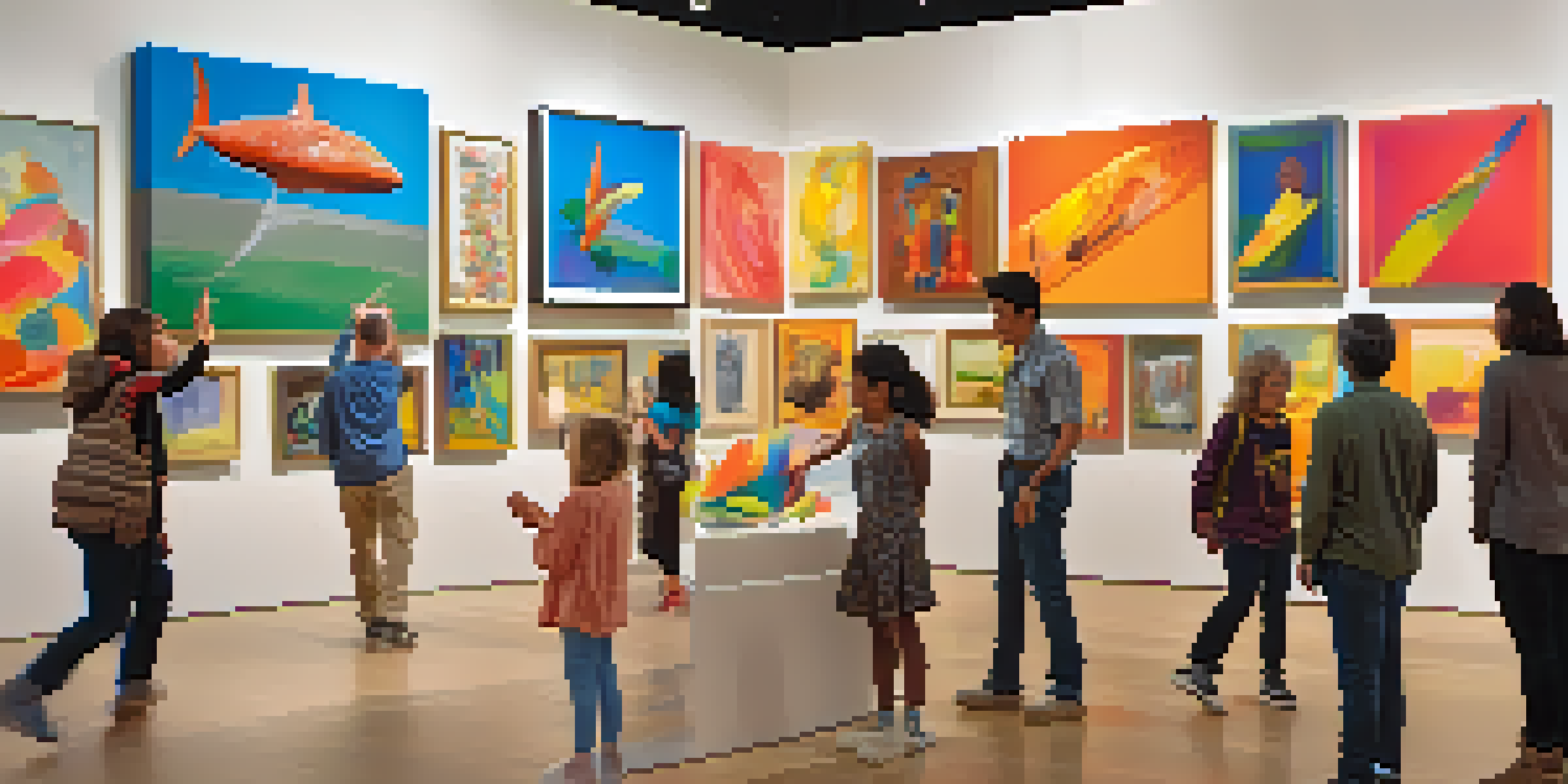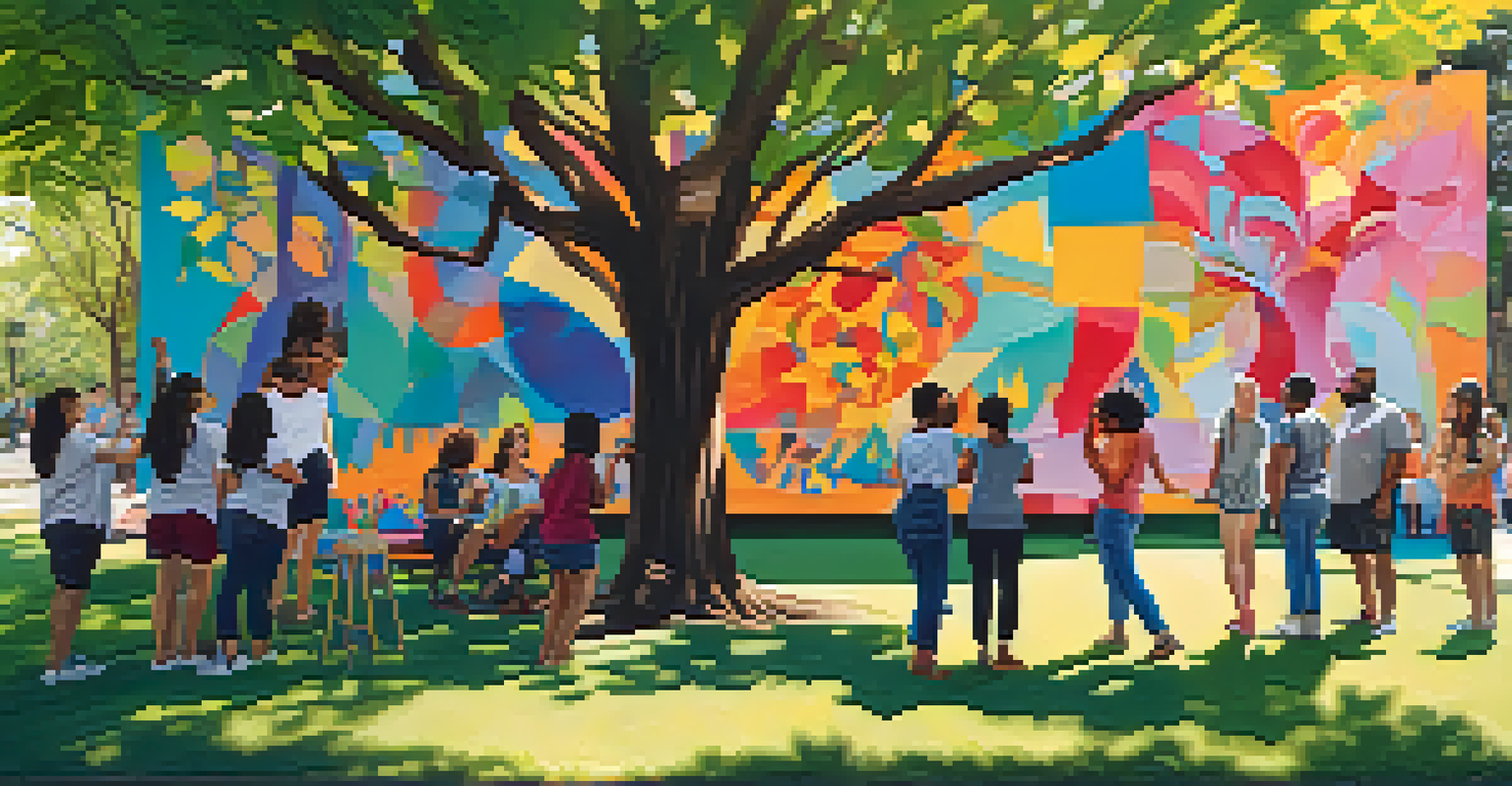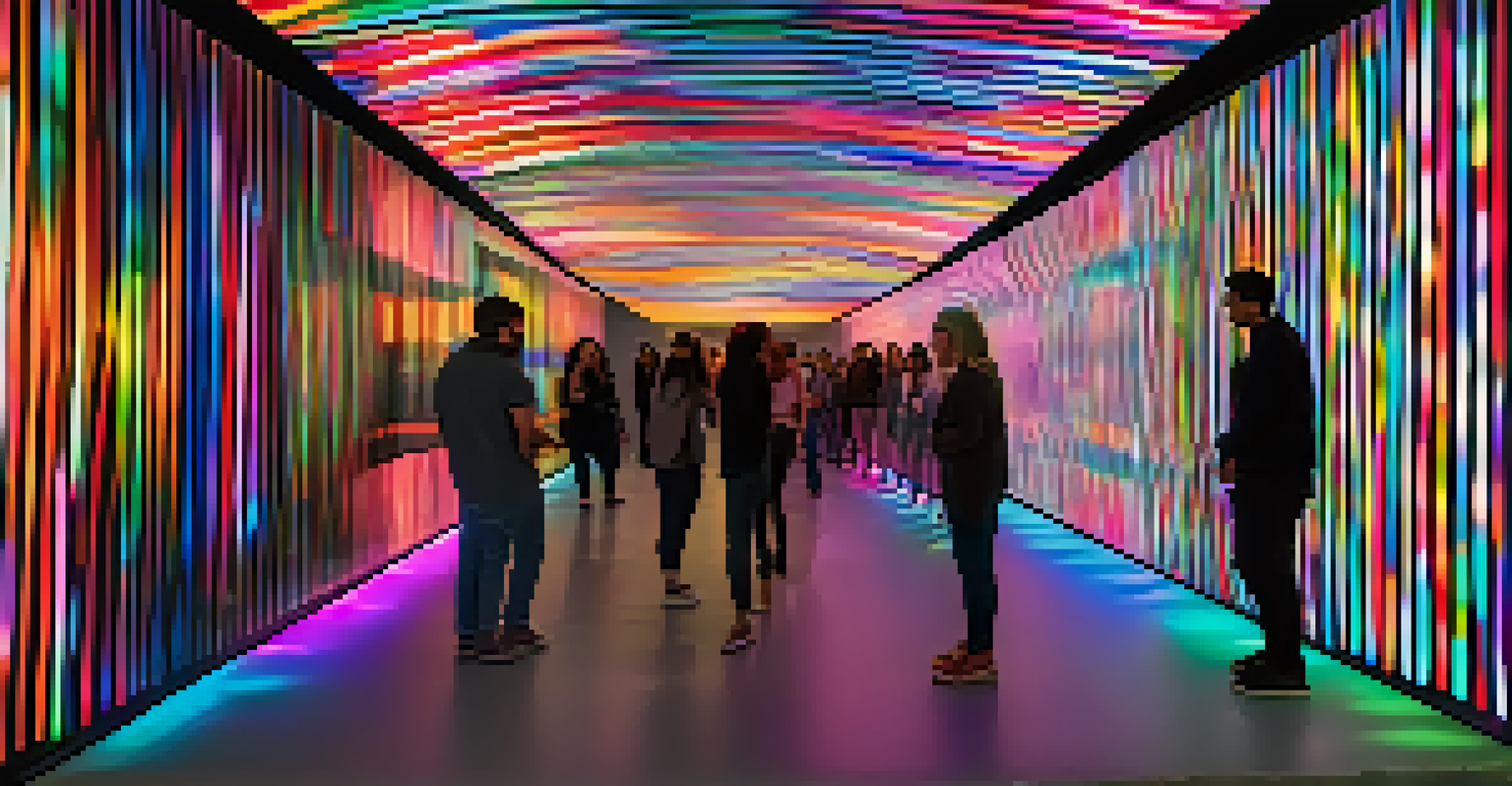Engaging with Art: The Importance of Playful Interaction

The Role of Play in Artistic Engagement
Play is often seen as a childhood activity, but it’s essential for all ages, especially in the art world. When we approach art playfully, we open ourselves to new perspectives and deeper connections. Just like children engage with their surroundings through exploration, adults can benefit from a similar mindset when interacting with art.
Art enables us to find ourselves and lose ourselves at the same time.
This playful approach not only enhances our enjoyment but also fosters creativity. Imagine walking through a gallery and feeling the urge to touch a textured piece or mimic a pose from a sculpture; these instincts can lead to a more profound appreciation. By allowing ourselves to play, we break down barriers and enrich our artistic experiences.
Moreover, engaging with art in a playful way can spark conversations and encourage collaborative exploration. Whether it’s through participating in workshops or interactive installations, play invites dialogue and shared experiences, which can deepen our understanding of the art and the artist.
Art as a Playground for Emotions
Art has a unique ability to evoke emotions, and playful interaction amplifies this effect. When we engage with art lightheartedly, we can explore our feelings without the pressure of judgment. For instance, a vibrant painting might inspire joy, while a dark installation could provoke introspection, allowing us to connect with our emotional landscape.

This emotional engagement can be likened to playing a game where the rules are fluid, and the outcomes are unpredictable. Just as players might experience triumph or defeat, art challenges us to confront our emotions in a safe space. By embracing this playful interaction, we allow ourselves to be vulnerable and open to the messages art conveys.
Play Enhances Artistic Engagement
Approaching art playfully opens us to new perspectives and deeper connections, enriching our overall experience.
Furthermore, playful interactions with art can serve as a form of therapy. Many art therapists incorporate play into their sessions, helping individuals express emotions they might struggle to articulate. This therapeutic aspect showcases how art can be a powerful tool for emotional exploration and healing.
Experiencing Art Through Movement and Touch
Movement and touch are fundamental to playful engagement with art. Many installations invite physical interaction, encouraging visitors to step inside the artwork rather than simply observe from a distance. This kinesthetic approach can deepen our connection to the art and allow us to experience it in a new light.
Every artist was first an amateur.
Think of it like dancing; the more you move, the more you feel the rhythm. In the same way, engaging with art through movement can lead to a more immersive experience. For example, walking through a light installation can create a sense of wonder that static viewing simply cannot match.
Touch, too, plays a crucial role in our relationship with art. While many traditional artworks are off-limits to touch, recent trends have embraced tactile experiences, allowing us to engage our senses fully. This physical engagement can create memorable connections that linger long after we leave the gallery.
The Power of Imagination in Art Interaction
Imagination fuels our ability to engage with art playfully. When we approach a piece with a sense of wonder, we invite our minds to explore the possibilities beyond the surface. This imaginative lens can transform how we interpret and appreciate art, revealing layers we might otherwise overlook.
For instance, viewing a surreal painting can prompt us to envision stories and narratives that resonate with our lives. This active engagement allows us to become participants in the artwork, rather than passive observers. The stories we create in our minds can bring a new life to the art, making it feel personal and relevant.
Emotions Amplified Through Play
Engaging with art in a lighthearted manner allows us to explore our feelings in a safe, judgment-free space.
Moreover, embracing imagination in art interactions can inspire creativity in our own lives. When we unleash our imagination, we cultivate a mindset that encourages innovation and exploration, both in art and beyond. This playful spirit can lead to new ideas, whether in our personal projects or professional endeavors.
Community Building Through Playful Art Engagement
Art has a unique ability to bring people together, and playful engagement enhances this communal aspect. Participating in interactive art events or collaborative installations fosters connections among individuals. When we engage in play together, we cultivate a sense of belonging and shared experience.
Think of community art projects where everyone contributes their creativity. These collaborations not only result in unique artworks but also strengthen relationships among participants. This interplay of ideas and perspectives can spark inspiration and innovation, creating a vibrant artistic community.
Furthermore, playful interactions in art can break down barriers between different groups. When people come together to explore art through play, they often discover shared interests and values. This connection can lead to lasting friendships and collaborations, enriching the broader art community.
Overcoming Barriers to Playful Art Engagement
Despite the benefits of playful interaction with art, many people feel hesitant to engage. This reluctance often stems from fear of judgment or the belief that art is only for the 'professionals.' However, it’s essential to remember that art is a universal language meant for everyone to enjoy and explore.
To overcome these barriers, we must foster environments that encourage playful engagement. Art institutions and community spaces can introduce interactive exhibits and workshops that invite people to participate without fear. By creating inclusive spaces, we can invite more diverse audiences to experience art in a playful manner.
Community Grows Through Art Play
Participating in playful art experiences fosters connections among individuals, creating a sense of belonging and shared creativity.
Additionally, we can challenge our own perceptions by embracing curiosity and a willingness to experiment. Instead of viewing art as a rigid form, we can approach it with an open mind, ready to explore and play. This shift in mindset can transform our interactions with art and inspire others to join in the fun.
The Future of Playful Art Engagement
As the art world continues to evolve, the importance of playful engagement is becoming increasingly evident. With the rise of technology, artists are finding innovative ways to incorporate play into their work. From virtual reality experiences to interactive installations, the future of art promises exciting opportunities for engagement.
This shift towards playful interaction is not just a trend; it reflects a broader understanding of how art can impact our lives. By prioritizing playfulness, we can create art experiences that are inclusive, engaging, and deeply enriching. This evolution encourages artists and audiences alike to rethink their relationship with art.

Ultimately, the future of art engagement lies in the balance between innovation and accessibility. By embracing playful interactions, we can ensure that art remains a vibrant aspect of our culture, inviting everyone to join in the exploration and creativity that it offers.